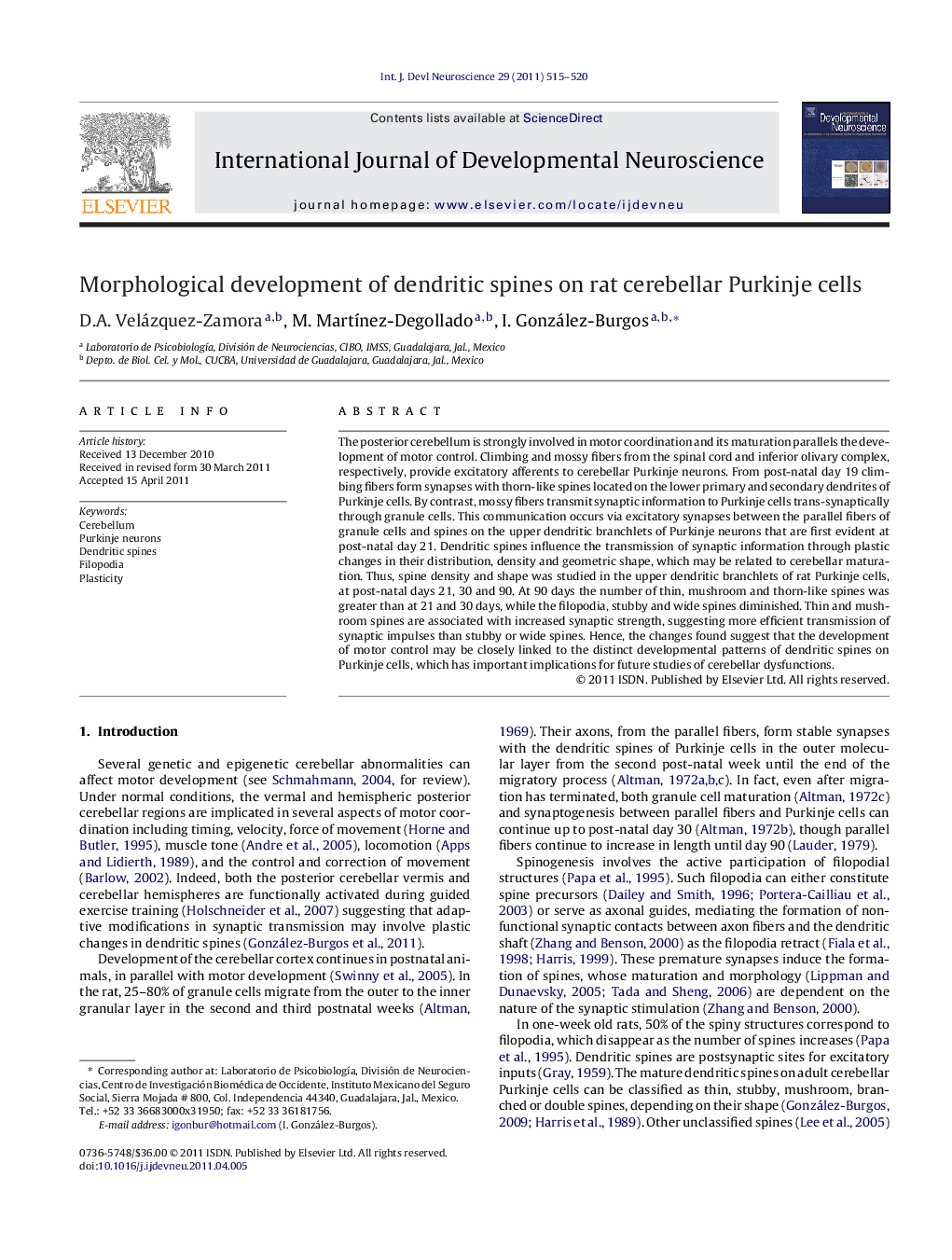| Article ID | Journal | Published Year | Pages | File Type |
|---|---|---|---|---|
| 2786638 | International Journal of Developmental Neuroscience | 2011 | 6 Pages |
The posterior cerebellum is strongly involved in motor coordination and its maturation parallels the development of motor control. Climbing and mossy fibers from the spinal cord and inferior olivary complex, respectively, provide excitatory afferents to cerebellar Purkinje neurons. From post-natal day 19 climbing fibers form synapses with thorn-like spines located on the lower primary and secondary dendrites of Purkinje cells. By contrast, mossy fibers transmit synaptic information to Purkinje cells trans-synaptically through granule cells. This communication occurs via excitatory synapses between the parallel fibers of granule cells and spines on the upper dendritic branchlets of Purkinje neurons that are first evident at post-natal day 21. Dendritic spines influence the transmission of synaptic information through plastic changes in their distribution, density and geometric shape, which may be related to cerebellar maturation. Thus, spine density and shape was studied in the upper dendritic branchlets of rat Purkinje cells, at post-natal days 21, 30 and 90. At 90 days the number of thin, mushroom and thorn-like spines was greater than at 21 and 30 days, while the filopodia, stubby and wide spines diminished. Thin and mushroom spines are associated with increased synaptic strength, suggesting more efficient transmission of synaptic impulses than stubby or wide spines. Hence, the changes found suggest that the development of motor control may be closely linked to the distinct developmental patterns of dendritic spines on Purkinje cells, which has important implications for future studies of cerebellar dysfunctions.
► Dendritic spine and filopodia density in cerebellar Purkinje cells correlated negatively through postnatal development. ► Dendritic spine density was significantly greater at day 90 than at days 21 and 30. ► Filopodia were significantly less abundant at day 90 than at days 21 and 30. ► Thin and mushroom spines were more abundant at day 90 than at days 21 and 30. ► Stubby, wide, and thorn spines were significantly less abundant at day 90 than at days 21 and 30.
